To mention Sega’s 32X is to conjure images of untapped potential, even failure in some eyes. Detractors point to a dearth of quality software after the initial launch, as the machine’s newly given life was slowly sapped away by the looming Saturn. As Sega shifted gears to focus on the upcoming CD-based machine, the 32X was left to wither and die, never achieving any of the expectations that both gamers and Sega itself had in mind for it.
The 32X is most likely Sega’s most controversial piece of hardware. Once opinions have been exchanged about whether or not the little mushroom device should have ever been conceived, conversations eventually take a turn towards what could have been – all the original and arcade titles that were expected but never released, and what might have happened had those titles actually arrived. Talking about these mystery games lights a spark in the eyes of some Genesis fans, as there were quite a few that may have actually made a difference. Castlevania: The Bloodletting, Darkstalkers, a new Ecco the Dolphin game – these seemed like a dream line up back in 1994, a list that could have made the wait for Saturn so much more bearable (and expensive). Sadly, few of them ever made it far into the development process, and details about their origins and concepts have remained hidden for almost two decades.
A Lost Title Resurfaces
One of those games, Sega’s Ratchet & Bolt, received little more than a minor blurb in magazines such as Sega Visions before it vanished completely. For almost 20 years, little was known about it, except that it was to feature two robot police officers with multiple weapons in a run-‘n-gun style of play. Originally conceived for the Genesis, it was moved over to the 32X and slated to be a part of the much-anticipated second wave of software, a group of titles that would have really shown what the add-on could do. Along with games like B.A.N.E., which featured a spherical, nano-covered tank that could adopt the properties of whatever it touched, and A Town Called Chaos, New Mexico, a Sims-like adventure where terrible things constantly plague a small town, Sega’s in-house teams were primed to show off the capabilities of the 32X. When Sega discontinued the machine, Ratchet & Bolt vanished from the media, along with all the others, and it appeared as though no one would ever know the details of this intriguing title.
The lack of specifics in the gaming press of the era has led many over the years to believe that the game was too early in development to offer more concrete details. Sega-16 began digging for information on Ratchet & Bolt and went directly to the source, producer and designer Michael Latham. As it turns out, the game’s concept and design were very well developed, and a 75-page design document intricately detailed all aspects of the project, from its plot and characters to how specific parts of the 32X hardware would be implemented. As the head of Sega’s Omega Group, Latham was heavily involved with 32X software, and Ratchet & Bolt was among those he felt had the most potential. Accordingly, he devoted a great deal of time and effort to fleshing out all aspects of it, and he meticulously chronicled all his ideas in the document. Thanks to Latham’s generosity, Sega-16 was able to get all the details on the game’s conception and short life, including never-before-seen concept artwork and details. Now, the story of this curious title can finally be told.
From 16 to 32 Bits
Despite what many may think, the game’s title has no connection to Sony’s Ratchet & Clank series. The sharing of the term “ratchet” stems merely from both games utilizing robots and machinery, nothing more. Aside from that one term, the two have little else in common. The Sega title predates the Playstation 2 classic by more than a decade, as Michael Latham began working on the concept of Ratchet & Bolt in 1991, originally designing it for the stock Genesis. Via email, he explained how his vision came about. “It was during Greendog that I came up with Ratchet & Bolt. There was so much I wanted to do in that design, but it was way under-funded, given an aggressive release schedule, and it was considered a bit of joke of property as it came from an unknown board game. I did understand R&B would be too much for Genesis but was very tempted on the Sega CD. However, it needed real-time 3D, which I had worked with a lot on PC titles at Activision. So when the 32X was released, I knew it was time. I would have likely waited for the Saturn, but that wasn’t an option for my group.”
Thus, the project was moved to the 32X. For Latham, this gave it the best possible chance for being released. The first party software that launched with the 32X came from Japan, and the few available third party games did little to take advantage of the new machine. Sega of America (SOA) was scrambling to get everything in its line up localized and ready to ship, leaving it no time to develop in-house software as it had done for the Genesis and Game Gear. Complicating matters further was the impending arrival of the Saturn, Sega’s true successor to the Genesis. Until the machine debuted the following September (no one at SOA yet knew of any decision to move up the launch date), the 32X was to be the company’s horse in the next gen race for the next year. Most of SOA’s teams were hard at work on getting Saturn titles ready, so Latham’s Omega Group was given full reign of 32X development. It was hoped that the second wave of games arriving after the initial launch window would be able to fill the gap and finally demonstrate the little mushroom’s capabilities. Ratchet & Bolt was to lead the charge.
The concept was pitched to Sega of America’s senior management on Friday, October 14, 1994. Latham’s presentation focused on how Ratchet & Bolt would make use of the new 32X hardware, as well as the role the game could play in bringing a new set of mascots to the upcoming platform, which was slated for release the following month. Sega approved, and in late December of 1994 work was assigned to Sega’s Southern California group, Sega Interactive Development Design (the one responsible for Eternal Champions, another franchise of Latham’s design). Latham told Sega-16 why this particular team was chosen. “Prior to that I was writing all the designs for product I created with them. They had grown to the point where it made sense for them to start owning the design process more directly. Also as the head of the Omega Group, which was the largest internal group at this point, running test/QA, working closely with Sega Toys and also operations, I was stretched quite thin, so this was the last year I directly designed so many games.”
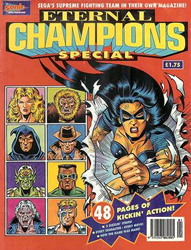 Ratchet & Bolt, along with B.A.N.E. and A Town Called Chaos, New Mexico, were to be the last games in which Latham would have such direct involvement, due to his increased responsibilities at Sega. Due to the size of their groups and the wide range of titles being developed under them, Latham and his direct counterpart, Ed Annunziata of Alpha Group, were constantly under pressure to reduce their direct roles in game development and assume more managerial positions. As his group was the larger of the two and because of his multiple duties within the company, Latham had to scale back much of his involvement and give his teams a greater say in the design process. He first did so during the development of Eternal Champions: Challenge from the Dark Side for the Sega CD. Latham explained his decision to Sega-16. “During [the development of] EC2, I made efforts to start this process. I still stayed very much in control of the storyline, the goals, and character creation but now the team was getting into the core design stuff.”
Ratchet & Bolt, along with B.A.N.E. and A Town Called Chaos, New Mexico, were to be the last games in which Latham would have such direct involvement, due to his increased responsibilities at Sega. Due to the size of their groups and the wide range of titles being developed under them, Latham and his direct counterpart, Ed Annunziata of Alpha Group, were constantly under pressure to reduce their direct roles in game development and assume more managerial positions. As his group was the larger of the two and because of his multiple duties within the company, Latham had to scale back much of his involvement and give his teams a greater say in the design process. He first did so during the development of Eternal Champions: Challenge from the Dark Side for the Sega CD. Latham explained his decision to Sega-16. “During [the development of] EC2, I made efforts to start this process. I still stayed very much in control of the storyline, the goals, and character creation but now the team was getting into the core design stuff.”
Still very much in control of Ratchet & Bolt, Latham was quite confident in its ability to serve not only as a flagship title for the 32X but of its brand name potential. Though Sega produced many titles each year, few had the merchandising legs demonstrated by its mascot, Sonic The Hedgehog. Eternal Champions was one of the few other titles first party games that got the chance to show off its brand power, and it received more support by Sega of America’s marketing division than most any other property other than Sonic itself, producing handheld LCD games, television commercials, the spin off games X-Perts on Genesis and Chicago Syndicate on the Game Gear, and even time as a pack-in title for the Genesis console itself. According to Latham, this was not commonplace, and SOA was very wary about which titles got its advertising. Even so, the overwhelming bulk of Sega’s merchandising power was still put behind the Blue Blur. Thankfully, Sega’s European branch saw enough potential to promote the brand, releasing comic books and a toy line. The success of Eternal Champions products in both America and abroad made SOA’s upper management take notice of Latham’s ability to create a playable and marketable franchise, so Ratchet & Bolt got the green light.
Born out of Necessity
Ratchet & Bolt on the 32X was to be centered on two robots in the year 2101. According to the original design document, society in the future has created machines to cater to its every whim, and electronic consumer goods companies now ran the government. The man responsible for this utopia is Professor Von Ion. He used his genius to create high tech cities of plastic and sophisticated electronics from which he earned millions, and he was soon called upon to keep those systems updated. To do so, he built two robots, Patch and Spackle, which would work tirelessly to maintain the cities. When they malfunctioned and began to destroy instead of build, it took an entire army of police to stop them. Von Ion was blamed and the debacle left him shunned and penniless.
Now, with Von Ion gone and the police department a completely private enterprise, there was nothing to stop people from adapting technology for their own particular uses. Massive robots were soon constructed to cause mayhem for entertainment, and the police were ill-equipped and too poorly funded to mount a response. In desperation, they once again turned to Von Ion, hoping that he would be willing to redeem himself for the disaster he had caused and confident that his services could be obtained inexpensively. Von Ion was commissioned to create a flexible robot army that could stem the crime wave and return peace to society.
Unfortunately, the police failed to account for Von Ion’s cunning and greed. Instead of building an army of robots, he built only two: Ratchet and Bolt. He then embezzled most of the police funds available and fled the country for an extended vacation. Now, the police were left with only two options. They could either mothball the robotic duo or make use of them. Given the circumstances, there was no real alternative, and Ratchet and Bolt were activated as rookie police officers. Equipped with 30 attack and protect functions, the pair were considered state-of-the-art, despite the fact that they were constructed out of the cheapest resources around.
As robots created to fight crime and protect the populace, Ratchet and Bolt were to be programmed to obey several basic directives. Similar to the movie RoboCop, the directives placed civilian well-being and law enforcement as the core of their personalities. Ratchet and Bolt had four basic laws they had to enforce: protect the people, protect the city, arrest all criminals, and protect their own chips. Human life was to always take precedence over property, and self-preservation only mattered in making arrests. The robots could not put themselves before humans and were programmed to make human life a priority.
Robots in Disguise
As police officers, both Ratchet and Bolt have human-like forms complete with skin and hair. They wear uniforms and sunglasses, and this lets them blend in. After all, their mission is to fight evil robots, and having open robot-on-robot warfare throughout the city would hurt the police enterprise’s bottom line; however, as the player progressed and the characters took damage, this form would begin to deteriorate, as detailed by an energy bar. Eventually, it would explode spectacularly using the 32X’s power of scaling and rotation, revealing their true robotic forms. Each form would have an energy bar of its own, and as Ratchet and Bolt continued to suffer injury, they would further disintegrate, losing their arms and then their legs, until all that remained was their spider-like microchip processor. This was the final form available to Ratchet and Bolt, and while they could maneuver on tiny legs and even jump attack enemies, one more hit would mean death, since each character only had one life. The jump attack would do little more than knock down opponents momentarily, and it would be tricky and highly risky to attempt. At this point, discretion is the better part of valor, and it would be better idea for the duo to call Dr. Von Ion than fight. Moreover, the more of their robotic bodies that became visible, the more attention they would attract from the criminals around them. This would make things quite hectic until the player managed to contact Dr. Von Ion.
Though he is out of the country, Von Ion responds to his creations’ video phone calls, answering from a different vacation spot with each one. As the creator of both Ratchet and Bolt, he is the only one who can fix them. Being the crook that he is, he charges the heroes for his services. Once the money is paid, a drone would fly onscreen and effectuate the repairs in a humorous animation. Von Ion’s services were also to be required for weapons upgrades. Through the video phone, Ratchet and Bolt could buy new and better weapons. Upon purchase, a drone would fly by and drop the weapon into the robot’s open chest panel, where it would automatically be activated.
Click to see all of Ratchet & Bolt’s forms!
Army of Two
The differences between Ratchet and Bolt were not merely cosmetic. Both robots were to have their own particular strengths and weaknesses, and players would need to know when to use one of the two to exploit a particular situation. Ratchet was the quicker of the two and had a much longer reach than his partner, but he wasn’t to be as resistant to damage. In contrast, Bolt was slower but much stronger and tougher. Using the two correctly would require skill and practice, something obtained by repeat playthroughs.
To combat crime, Ratchet and Bolt could use a total of 33 different weapons. At the start of the game, players would be issued a default three for each character, with the other 60 becoming available during gameplay. Up to four other types of weapons could be armed in addition to the default six, and they could be interchanged by entering phone booths scattered throughout each stage. Armament was divided into three categories: head, hand, and foot. Head weapons could fire in multiple directions by maneuvering the D-pad, and they ranged from charged shots to rapid fire in nature. For instance, Ratchet’s Malfunction Bolt would stun criminals, causing them to lose control of their bodies and be unable to attack. While this would remove them from combat, it would also make them harder to subdue and arrest since their movement was now sporadic and uncontrollable. Another weapon, the Anti-Gravity Gun, would send foes high into the air for a few seconds, after which they would crash to the ground. Bolt had weapons such as the Power Drain Bolt (head unit), which knocked out enemies and transferred a portion of their energy back to Bolt, and a Claw Grab Hands (hand weapon), that extended and grabbed criminals, allowing Bolt to rush in with a massive head butt. Hand weapons were mostly punch-based, though there were to be a few defensive or utility functions as well, such as a grappling hook. Both characters’ leg units were for propulsion, and 10 different forms of movement were going to be incorporated into the game, such as stilt legs, friction feet, and rocket launching feet.
Additionally, when the two characters used their individual weapons together, greater and more powerful attacks would become available. By joining weapons, the duo could create an incredible number of combo attacks. In all, both Ratchet and Bolt could combine almost their 40 different weapons into 2600 attacks.
Click to see all of Ratchet & Bolt’s weapons!
The weapons themselves each have a finite amount of energy, and the only way to replenish their reserves would be to siphon energy from the city itself. Ratchet and Bolt could attach themselves to street lights, floating signs, and even other robots and steal their power, and the screen would dim and city lights would flicker on and off. The heroes would be vulnerable to attack while repowering, so players would have to fight for chances to replenish their supply. If a weapon’s energy bar were to deplete completely, it would self-destruct and be removed from the robot’s inventory.
Latham emphasized the importance of the weapon effects, and these were just some of the details found throughout the design document that illustrated how Ratchet & Bolt was being created to show off virtually every aspect of the 32X’s power. Each weapon had its own little graphical animation and detail, and while Latham stated in the document that he was open to creative thought about the actual effects themselves, he also made it clear that whatever effects ended up being used would be vital to the game’s success.
Cops on the Case
Ratchet & Bolt was to be playable with either the three or six-button controller, and the bulk of the action was slated to take place over six levels, called cases, with one for each of the top public enemies. Each case was divided into seven timed sections, beginning with a briefing in the police chief’s office. Here, the robot officers are informed of the case details by M.A.R.C.-O (Mobile Artificial Remote Computer One), an artificial intelligence that keeps Ratchet and Bolt informed of events during certain stages. The cases ended with a debriefing session where the players could see their individual stats. Latham anticipated using a speech synthesis engine to allow M.A.R.C.-O to speak during these sessions, so that players could obtain a clear understanding of their progress and where they needed to improve in subsequent playthroughs.
Much like ToeJam & Earl, Ratchet & Bolt emphasized two-player gameplay. It could still be played alone, with fewer criminals to fight and less destruction. Latham wanted to keep the same sense of challenge and reward experienced when playing with a friend. For this reason, playing as either of the two robots obtained the same goals and rewards as using both at the same time. The difficulty and action rose when more than one player was involved, but the results would be equal to that of the single-player experience.
Though first conceived as a 24Mbit title on the Genesis, Ratchet and Bolt was eventually planned to use 32Mbits on the 32X in order to give the first playable section of each case, the game’s car chase sequences, a more modern feel. In them, the duo must race at high speeds to intercept the giant, rampaging boss that is tearing a wide swath of destruction across the city. The 3D engine from Star Wars Arcade would have been tweaked for use here, as the stage would have employed a first-person perspective. This was necessary to convey the sense of sheer speed the player would feel driving the police car, which while nearly indestructible, ran at over 300MPH and had no brakes. “The car was in full 3D,” Latham explained. “This was key. The idea of the driving sequence was to recreate the feeling of putting a camera on the back of pinball as it goes slamming around the pinball play field.”
The lack of brakes and constant high speed of the car was meant as another example of Dr. Von Ion’s extreme greed. He had cut corners on all of his projects, and his police cars were no exception. In order to successfully navigate the car, players would have to follow a mini map. The car’s navigation computer would call out the directions with very little warning, and near-90-degree turns would have to be made to avoid collisions. Anything the vehicle impacted would be destroyed by its force, adding to the monetary total that the police would need to pay. All the hectic driving and crashing would be spectacularly detailed through bits of shrapnel and debris flying all over the screen. In the rear-view mirror, a mini cut scene would show cars flipping or entire buildings tumbling, illustrating the mass destruction caused by Ratchet and Bolt’s ride. Crashing would slow the car down, allowing the rampaging boss to rack up more damage. It would also slowly damage the car, which though extremely durable, was not to be entirely indestructible. The goal would be to get the car to the crime scene as quickly and with as little property damage as possible. During the drive, the car would display how much damage was being done.
The game’s humorous nature would have been a central element to the driving stages, especially during two-player sessions. While player one did the driving, player two could harass his partner with quips and comments by manipulating the D-pad. At any time during the chase, the driver could transfer control to the other player, and take his turn at backseat driving.
The second section of each case would be the City Block Run, in which the characters would roam a side-scrolling stage with full 3D backgrounds. The robot-cops move to the right towards the boss – still visible in the background –arresting criminals and earning money along the way. As the boss moves, he causes structural damage for which Ratchet and Bolt are responsible. This constant need for money means that both robots will have to apprehend as many criminals as possible in each stage. Each arrest nets a certain amount of cash, depending on the size of the offense, and it is added to the officers’ bank account. M.A.R.C.-O would appear on any nearby video screens and update the players on their progress. At any time during these City Block stages, Ratchet and Bolt could separate and explore the area a via split-screen mode. Players had the option of completely going their own ways or activating a tether that would only let them wander off up to a certain distance. The default setting was going to be a freestyle mode, where both players began in different locations, and the tether option could be activated in the options menu. Latham came up with the tether idea after hearing players complain about their partners wandering off too far in ToeJam & Earl.
Players would have made great use of the wide variety of attacks. Almost 20 different types of enemies were created for the game, including both organic and robotic foes. The smaller enemies themselves were to be done in 3D, while the larger bosses would be sprite drawn. Arsonists, thieves and rabid dogs litter the city streets, along with all sorts of malfunctioning maintenance robots. This large selection of enemies meant that players would have to vary their attacks and know which would be most effective against certain enemy types.
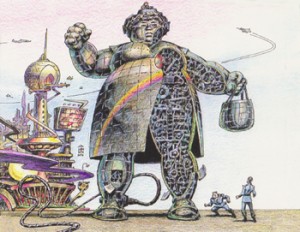 These case sections featured mini and final bosses that consisted of humans piloting massive robotic forms. Each boss would have to be taken down in two ways. First, the actual robot had to be fought and incapacitated. Secondly, its source of power or those assisting it had to be disabled. For instance, case #1’s final boss was a massive robotic shopping lady piloted by Norma Braxton, a criminal wanted for excessive shopping (another example of the humorous element). Towering high above the city buildings, the giant robot rips the roofs off of them and empties their contents into her huge shopping bag. In order to take her down, Ratchet and Bolt would have to disable her attacks and disconnect her from the city’s power plant, the source of her power. Through the split-screen feature, one character could fight the boss while the other eliminated its source of power. In the single-player mode, more time would be added to the clock so that players could complete both objectives. Other mid bosses included a trio of land and air-based vehicles, a tank that fired different chemicals, weather spheres that launched elemental attacks, and a three-man band that fought using their instruments from a speeding platform.
These case sections featured mini and final bosses that consisted of humans piloting massive robotic forms. Each boss would have to be taken down in two ways. First, the actual robot had to be fought and incapacitated. Secondly, its source of power or those assisting it had to be disabled. For instance, case #1’s final boss was a massive robotic shopping lady piloted by Norma Braxton, a criminal wanted for excessive shopping (another example of the humorous element). Towering high above the city buildings, the giant robot rips the roofs off of them and empties their contents into her huge shopping bag. In order to take her down, Ratchet and Bolt would have to disable her attacks and disconnect her from the city’s power plant, the source of her power. Through the split-screen feature, one character could fight the boss while the other eliminated its source of power. In the single-player mode, more time would be added to the clock so that players could complete both objectives. Other mid bosses included a trio of land and air-based vehicles, a tank that fired different chemicals, weather spheres that launched elemental attacks, and a three-man band that fought using their instruments from a speeding platform.
The graphics in the City Block sections would be a combination of 2D sprites with 3D backgrounds. This mix permitted scaling and large, rotating objects to fly around the background while the action remained in the traditional side-scrolling format. Latham wanted the backgrounds to be as dynamic as possible, a term he stressed as central to Ratchet & Bolt’s visuals. The game was to be a showcase of the 32X’s power, and the ability to mix 2D and 3D environments seamlessly could illustrate the machine’s potential as a worthy bridge to the upcoming (and more costly) Saturn.
The special effects would also have been applied to enemy vehicles, which Ratchet and Bolt could take from their foes and use, providing they didn’t damage or destroy them first. Vehicles could be scaled in and out of the background for dramatic effect. Given that the main characters were made from off-the-shelf parts, like those found in major appliances, taking resources from enemies seemed like good idea to Latham. “A good example,” he detailed, “were the jetpacks. The idea was that if Ratchet and Bolt could perform a skill shot on the enemy and not damage the vehicle, they could use that item for a while. R&B were always resource poor, so I liked to concept of being scrappy, much like how the energy refill worked.”
After defeating the mid bosses, players would finally arrive at the feet of the case boss they were pursuing. This would signal the next section, called the Takedown, where the boss takes up the entire background. Each boss’s weak spots was detailed in the pre-case briefing, but getting to them would not be easy. The bosses would typically be huge, taking up as much as 16 screens of space (four screens high by four wide). Security robots and weapons protect the weak spots, so the heroes must work together to reach them. Certain areas were to have access panels through which players could actually enter the boss and attack from within. What made cooperative play so interesting here is that with both players present, they would be need to work together to open the panels in order to gain entry. This way, the game would not be in split-screen mode when the new screen loaded.
Boss battles were meant to be fought from two different split-screen perspectives. Though both characters needed to open the panels, only one had to enter. The other player remained outside, fighting off the boss’s helpers, disabling its power sources or reducing its attack capabilities. Once inside, Ratchet and Bolt could use their powers to shrink their forms and better fit among the cramped circuitry. Then, they would be free to destroy different pistons, gears, pulleys, and energy lines that comprised the boss’s innards. Each part that they destroyed was to be tied into others, causing a chain reaction that would result in the boss’s complete destruction. Different locations notwithstanding, the players’ actions directly impacted each other. Latham envisioned how damage inflicted by one player outside would affect the other inside, and vice versa. “When a player was inside all the electronics and gears were 3D. The idea was these 3D gears, when attacked inside, would scale out to explode to the outside. So, if a player was on the outside they would actually be damaged by the gears and electronics exploding out. The same would apply in reverse. Attacking the outside could blow holes into the inside. This meant that cooperative play was essential.”
After enough damage had been done, the boss would begin a destruct sequence, and the heroes would have to make their escape or perish in the blast. The huge robot’s destruction results in its human pilot fleeing, and Latham devised many different means of escape that combined defensive attacks and quick movements to create a small window of opportunity for arrest. Ratchet and Bolt needed to destroy the pilots’ escape vehicles and catch them quickly or risk losing half their earnings for the case. Case earnings were the game’s version of point scoring, so the less damaged caused by destruction, the better the players’ progress.
The final case was to be a massive showdown with Patch and Spackle, reactivated by Von Ion’s rival, Professor Rapoff, in a boss fight that was twice the size of the other stages. The two bosses were evil versions of Ratchet and Bolt, only they sported a greater variety of firepower and were faster. To make things challenging, their physical characteristics were the direct opposites of the heroes. Patch looked like Ratchet but was strong and slow, and Spackle was quick and had a longer reach, despite looking like the bulky Bolt. Both evil robots also had nine weapons (three each for head, arm, and leg units). An additional challenge for players was the fact that the battle had a time limit. Dr. Von Ion would be captured by Patch and Spackle and tied to a recycling machine that would activate once the time ran out. Ratchet and Bolt had to defeat their evil twins and save the doctor as quickly as possible.
Additionally, Latham planned to implement a separate game mode called Criminal Bust. More competitive than the main game’s cooperative style, Crime Bust would have players battling it out for the highest score. Rounds were to be timed and each player would have to arrest as many criminals as possible before the timer expired. Damage would affect scores, so winning a round depended on catching lots of criminals and causing as little damage as possible.
The successful completion of Ratchet & Bolt depended on how much destruction the players caused or permitted. If the damage was minimal, the debriefing section showed the players being congratulated by the police chief on a job well done. If too much occurred, the chief would rant about the police being bankrupted from the expense. Therefore, players would have to emphasize cash over survival. Ratchet and his pal weren’t just fighting through all seven cases for justice and peace. Their very lives depended on their success, and failure meant deactivation and the scrap heap. If preventing destruction or making a big arrest might result in the loss of a body form, then it would be worth the risk, since buying a repair from Dr. Von Ion was less expensive than a building’s destruction.
At the end of the game, players were to be treated to what Latham hoped could be a great ending, with the pair graduating from rookies to full police officers. He detailed in the design document that the normality of running out of memory space at the end of the design process must be avoided. He had planned to come up with an ending early, but decided that it would be necessary to wait until the project was near completion and he would have a better idea of what assets could be reused or would have to be added.
Sega Closes Shop
Michael Latham got as far as the initial 75-page design document and some early demo coding on Ratchet & Bolt (done by Steven Lashower). The second phase of development was to be continued by the Sega Interactive Development Division (SIDD), which would have modified the design and completed the project under Latham’s direction. It was during this phase that the game’s humorous content would be fully developed
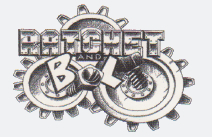 Despite already being in the early alpha stage of development, Ratchet & Bolt was shelved, along with all other 32X projects, when Sega decided to focus exclusively on the Saturn. Internal restructuring saw Omega Group become the first internal team to transition into new roles and software, so Latham’s vision sadly never came to fruition. Omega was integral in the company’s pivot to SegaSoft, which was created in 1995 to find alternative sources of revenue for Sega, such as on the PC, as well as to develop for the Saturn itself. The venture saw its name on such titles as Scud: Disposable Assassin and Bug Too!. Latham also became a key player in SegaSoft’s Heat.net service, which offered online gaming for PCs. Titles published by Sega and other companies were playable over the service, which offered big name titles like Quake II, Diablo, and Baldur’s Gate.
Despite already being in the early alpha stage of development, Ratchet & Bolt was shelved, along with all other 32X projects, when Sega decided to focus exclusively on the Saturn. Internal restructuring saw Omega Group become the first internal team to transition into new roles and software, so Latham’s vision sadly never came to fruition. Omega was integral in the company’s pivot to SegaSoft, which was created in 1995 to find alternative sources of revenue for Sega, such as on the PC, as well as to develop for the Saturn itself. The venture saw its name on such titles as Scud: Disposable Assassin and Bug Too!. Latham also became a key player in SegaSoft’s Heat.net service, which offered online gaming for PCs. Titles published by Sega and other companies were playable over the service, which offered big name titles like Quake II, Diablo, and Baldur’s Gate.
Latham was very disappointed to see Ratchet & Bolt (along with B.A.N.E. and A Town Called Chaos, New Mexico) canceled. A labor of love over which he poured several years of his life and creativity, it was not easy to see it killed. While it is unlikely that the game could have saved the 32X alone, it may have helped put the machine in a better historical position had it ever made it to store shelves. There was nothing else like it on the 32X, and it could very well have spawned a franchise that may have continued on the Saturn and Dreamcast, possibly even beyond. If anything, Ratchet & Bolt serves as a prime example of the dedication that many Sega employees had towards making their products successful, regardless of platform, and it illustrates the creativity and team mentality that was central to Sega of America’s game-making policies.
Even with all the challenges the 32X faced as a viable platform, Latham still believes that it could have carved a niche for itself had the second generation of software ever been released. These were the games that would have benefited from a full development cycle from teams that were now familiar with the hardware. This added development time would have been a boon to the Saturn as well. “The sad part,” he told us, “is if they had published one more wave of 32X games, even if they didn’t become hits, it would have allowed the Saturn projects much more time to be great.”
We’ll never know what kind of impact Ratchet & Bolt would have made for the 32X, but at least we now have a clearer vision of what could have been. Enjoy the gallery of concept art below, and check out the short pitch video Latham and Lashower created to present the game to Sega management!

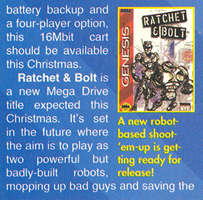


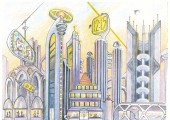
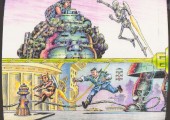
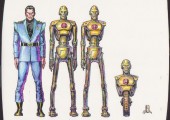
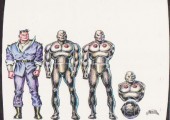
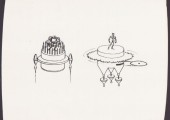
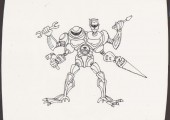
The worst stupidity was canceling the Sega 32X. Tank you Nakayama.